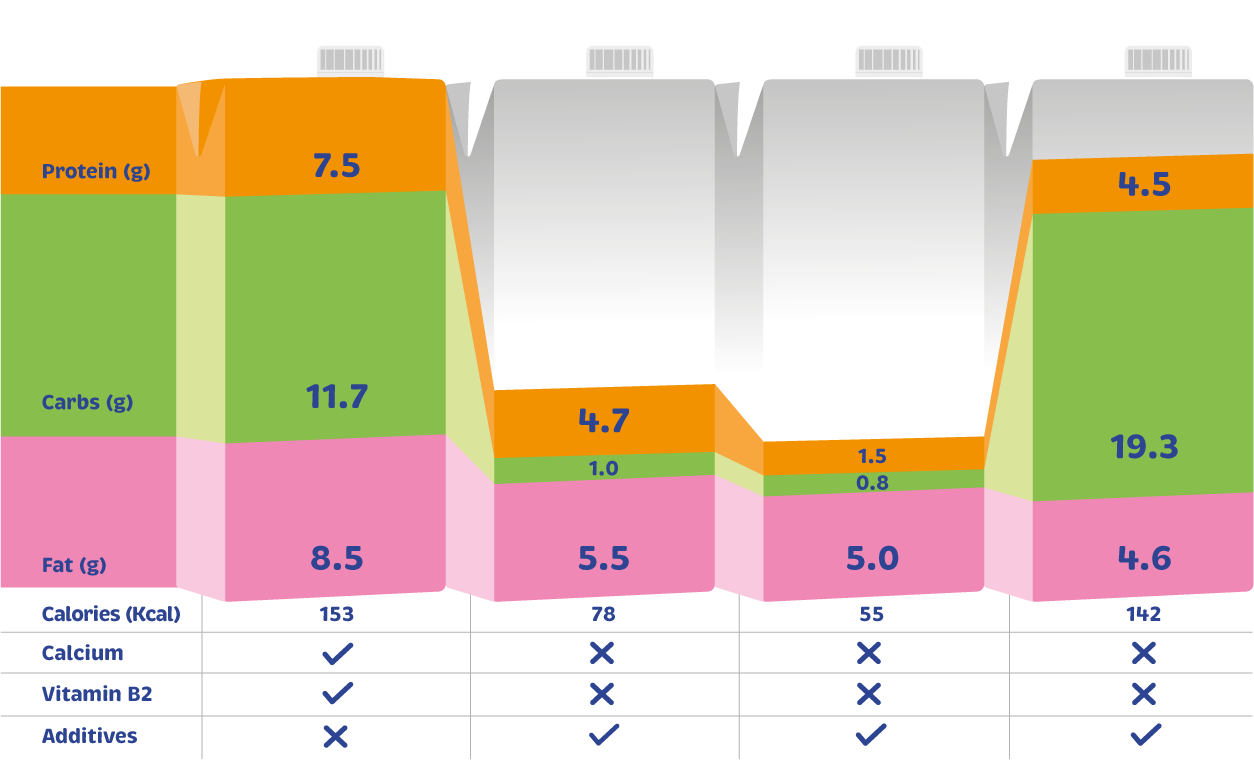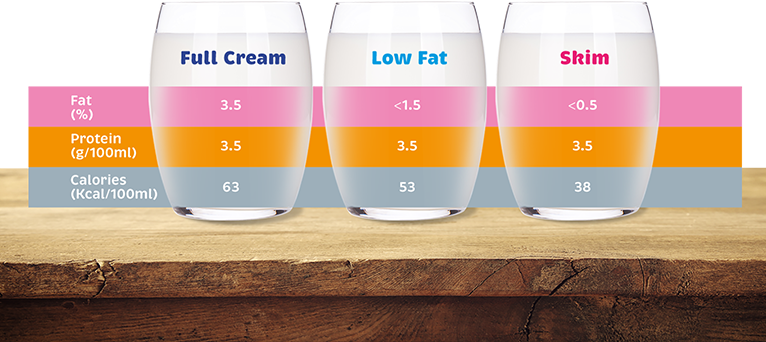FACT Cow's milk is naturally nutrient rich and provides essential nutrients including calcium, vitamin B2 and potassium.
Plant-based alternatives don't always have the same natural occurring nutrients.
FACT Cow's milk has no food additives.
Plant-based alternatives have added ingredients including salt, sugar, stabilisers, emulsifiers and more.
FACT Cow's milk provides our body with high-quality complete protein.
Milk protein contains 9 essential amino acids that the body needs daily in order to function properly including maintenance of bone mass and muscles which promotes growth. Plant-based alternatives only contain incomplete protein.
FACT Cow's milk is naturally rich in calcium.
Plant-based alternatives contain no calcium. Calcium in cow's milk plays an important role in supporting body functions and mechanisms. It contributes to the maintenance of bones and teeth, and to the functioning of muscles. Calcium also supports normal neurotransmission, blood clotting and functioning of the digestive enzymes.


